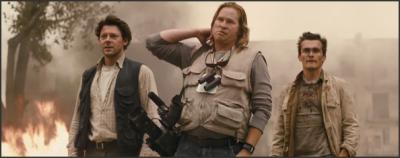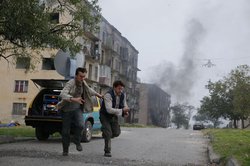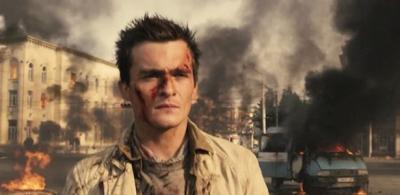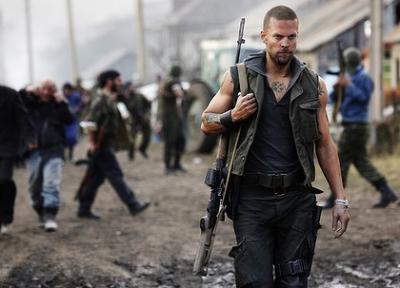By: debbie lynn elias

In August of 2008, the eyes and television cameras of the world were all turned on an event of international importance. Sadly, it may not have been the right event to be focused on, for while the world was watching the pomp and circumstance of the opening ceremonies of the Beijing Olympics, thousands of miles away in the former Soviet country of Georgia, a war erupted between Georgia, and Russia, who had the backing and participation of the separatist governments of South Ossetia and Abkhazia. On August 7, Georgia launched a large scale military operation (10,000-11,000 troops) against South Ossetia in an effort to reconquer its territory in Tskhinvali, as well as allegedly responding to attacks on its peacekeepers by Russia in South Ossetia. The he-said/she-said scenario played out with Russia deploying the 58th Army and airborne troops in South Ossetia. Air strikes were also launched against Georgian forces and tactically and logistically advantageous locations. By day 2, Russian Marines landed on the Abkhazian coast and the Russian Navy had blockaded the Georgian coast. Five days after fighting began, a cease-fire agreement was implemented after retreat by the Georgian forces and following intervention by the European Union.

Inspired by these not so well publicized events, uber action director Renny Harlin now brings us a thrilling action packed telling of the Russo-Georgian conflict, using a fictional journalist named Thomas Anders and his more than daring cameraman Sebastian Ganz as the catalysts for the behind the lines explosive adventure of yet another tragic piece of world history. In a nutshell, this is the Renny Harlin we know and love, and he is at the top of his game as he blows us away with 5 DAYS OF WAR.
We first meet Anders and Ganz in Iraq. On their way to get an exclusive story, they are ambushed. Anders’ journalist girlfriend is killed. Anders himself is badly wounded but rescued by Georgian coalition peacekeeping forces led by Captain Rezo Avaliani. Shell shocked over the attack and loss of his girlfriend, Anders returns to the United States, lost, alone and losing much of his daring-do journalistic combat bravado; that is until he gets a call in 2008 from an eccentric colleague, The Dutchman.

Conflict is brewing in Georgia and Anders needs to get in on it. Heading off to Ossetia, Anders hooks up with Ganz and a few of the die-hard journalists who are more interested in the adrenalin rush of conflict coverage as opposed to the glory of the Olympics. Acting on a tip, Anders and Ganz head off on their own, stopping in the beauteous border village of Viziana. While taking an evening respite to soak in some local color and the beauty of a traditional Georgian wedding, the village comes under attack. Mayhem ensues as townspeople attempt to flee while carnage litters the streets and blood flows faster than a river. Trying themselves to escape, they rescue a young schoolteacher, Tatia, who has been separated from her family. Using Tatia as their translator and calling on Anders’ old savior, Rezo Avaliani, Anders and Ganz agree to help Tatia find her family while they frantically document the cold blooded civilian murders and horrors of war while trapped in the thick of battle.
Under attack and cut off from the world with communication down, struggling to get their footage out to the world, survival becomes paramount if they are ever to broadcast the truth.
 Long known for his unique casting style, Harlin “love[s] working with a fabric of actors…[that] all bring some extra color into the story.” 5 DAYS OF WAR is no different. Rupert Friend is charismatic as Thomas Anders. Cast by Harlin not only because of his strength as an actor, but also “to mislead the audience a little bit” by not being a “megastar” in the lead role, Friend is not who one would think as your typical gung-ho combat correspondent. Yet he gives Anders an earnestness and honesty that is refreshing and interesting.
Long known for his unique casting style, Harlin “love[s] working with a fabric of actors…[that] all bring some extra color into the story.” 5 DAYS OF WAR is no different. Rupert Friend is charismatic as Thomas Anders. Cast by Harlin not only because of his strength as an actor, but also “to mislead the audience a little bit” by not being a “megastar” in the lead role, Friend is not who one would think as your typical gung-ho combat correspondent. Yet he gives Anders an earnestness and honesty that is refreshing and interesting.
As Sebastian Ganz, Richard Coyle is what we have come to expect combat photographers to be. Energetic, fast talking and often reckless when it comes to getting “the shot”, for anyone who has seen “The Bang Bang Club” (and if you haven’t already, it is a Must See) or “Restrepo”, Coyle’s Ganz is the embodiment of the combat journalist. He has a dynamic infectious presence from which you can never turn away.
 The real casting coups, however, are Johnathon Schaech, Val Kilmer and Andy Garcia. As Dutchman, Kilmer is over-the-top, always on a high, exuding believable delusions of invincibility. With minimal screen time, Kilmer makes use of every second, etching his presence into our emotional palette. Harlin “love[s] him because he has this reputation of being a little bit troubled sometimes and whatever. But for me, what somebody like [Val] brings is not just an actor whose going to come in and say the lines. He brings his whole bag of tricks and he’ll offer you suggestions. He’s a collaborator. And you always get more than you expect.”
The real casting coups, however, are Johnathon Schaech, Val Kilmer and Andy Garcia. As Dutchman, Kilmer is over-the-top, always on a high, exuding believable delusions of invincibility. With minimal screen time, Kilmer makes use of every second, etching his presence into our emotional palette. Harlin “love[s] him because he has this reputation of being a little bit troubled sometimes and whatever. But for me, what somebody like [Val] brings is not just an actor whose going to come in and say the lines. He brings his whole bag of tricks and he’ll offer you suggestions. He’s a collaborator. And you always get more than you expect.”
Another favorite performance comes from Johnathon Schaech. A complex character, Schaech is almost unrecognizable as he transforms into Captain Rezo Avaliani. His accent is impeccable. But it is the sincerity, kindness, care, concern and strength that he imbues into Rezo that stands out against the harsh realities of war. A silent humanity. As Harlin opines, “He makes a Georgian soldier look good.” Outstanding performance.

Likewise is Andy Garcia who is mesmerizing as Georgian President Mikheil Saakashvili. Not only does Garcia bear more than a strong physical resemblance to Saakashvili, but it turns out that Garcia is the President’s favorite actor, prompting Harlin to move heaven and earth to cast Garcia in this pivotal role. Replicating an inspiring and empowering speech given by Saakashvili to the Georgian people on August 12, 2008, Garcia moves one to tears with his passion. Interestingly, it is 8,000 Georgian people themselves who appeared at an open casting call that comprise the open-air audience at the Parliament building, the same people who stood there one year earlier to hear the real President speak. Garcia is so perfect, so realistic, so enigmatic, that the Georgians themselves were moved to tears and cheering, just as they did for Saakashvili. And Harlin captured it all on camera.

Renny Harlin became involved in the project less than one year after the war itself. Broached with the blueprint for 5 DAYS OF WAR, “I dove into research. I saw photos and videos of the war and read stories and then went to Georgia. I just became really passionate about this and really felt like I could really be the Renny Harlin that I can be if I tell this story. I can take what I’ve learned before, what I’ve done before and really make a movie that has something to say.” Written by Mikko Alanne and David Battle, 5 DAYS OF WAR uses the unconventional bravado of journalists to tell a story. Each character is well crafted and evolve in an organic fashion. Each has depth as we come to know them and see that it’s not just about “getting the story”. There are real moments of humanity which set the wheels in motion. That said, though, it was with deliberate intention that Harlin and Alanne chose the POV to be that from the journalists’ perspectives. “The whole angle of the journalist was based on my research there. I spoke to a lot of refugees, a lot of soldiers, a lot of politicians. I spoke also to a lot of international journalists who were in Georgia during the war. And their stories and their frustration with not only risking their lives and trying to get the story, but then not being able to get the story out into the world because it doesn’t serve certain news corporations policy or whatever they want to tell.” And the character detail is as interesting as the authenticity with which Harlin films the war.

As for the authenticity of 5 DAYS OF WAR, not only did Harlin have full cooperation from the Georgian government in terms of providing equipment, artillery, uniforms, locations (actual villages that were bombed during the war and the Presidential buildings), but then he calls on the best of the best with his Director of Photography, Checco Varesse. “I really wanted to find a DP who would have that experience and when I met with him I had seen his credits all the way from South America to Rwanda and Bosnia, Kosovo, Afghanistan, Iraq and all these places. Immediately when we met, we just hit it off. We shared a passion for films and stories. Having him there not only advising me but advising the actors and everybody about what they do in this situation, how they act and how they deal with just day-to-day situations of being in a war zone, was really invaluable.” Shooting with the Hi-Def RED camera system, not only are the aerial battle scenes flawlessly lensed (and yes, they actually reenacted the battles), but the ground coverage bears an intimacy and “up close and personal” element that is as unsettling as if you were in the midst of battle yourself. There is no shortage of blood, bone, bodies and explosions.

But 5 DAYS OF WAR isn’t all about war. From the opening sequences, we are shown the beauty, tranquility and culture of Georgia and its people with lush aerials, a mini-travelogue of quaint towns and villages and folkloric custom. An exquisite metaphoric juxtapositioning.
Visceral, bloody, emotional, passionate and fascinating, 5 DAYS OF WAR paints yet another picture of our fractured world but this time done by a man who does it better than the rest, Renny Harlin.
Thomas Anders – Rupert Friend
Sebastian Ganz – Richard Coyle
Dutchman – Val Kilmer
Cpt. Rezo Avaliani – Johnathon Schaech
President Saakashvili – Andy Garcia
Directed by Renny Harlin. Written by Mikko Alanne and David Battle.












